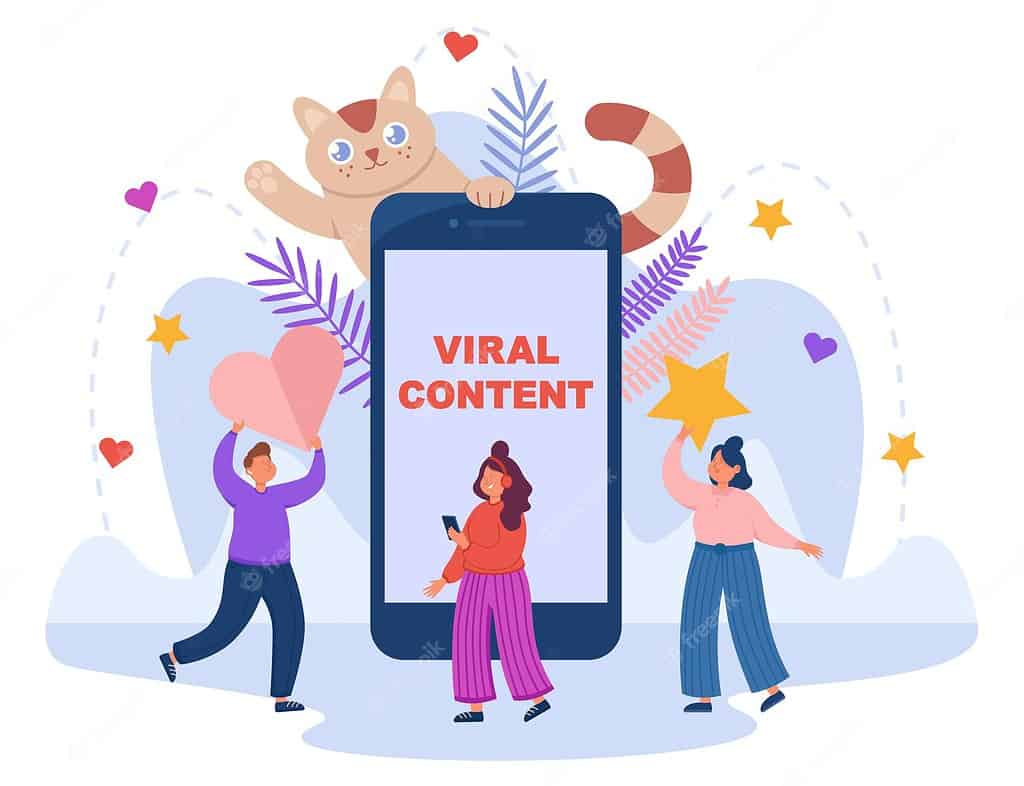Introduction: Understanding Viral Content
In the digital age, viral content has become a golden ticket for businesses and content creators. With the power to reach millions of users worldwide, viral content can significantly boost brand visibility, customer engagement, and conversion rates.
Viral content is any piece of information that is rapidly and widely shared across the internet. It can be a fascinating blog post, a captivating image, an intriguing infographic, a fun quiz, or even a compelling listicle. What makes it viral? It’s simple – it captures attention and evokes enough interest that people feel compelled to share it.
So, what are listicles, infographics, and quizzes? Let’s take a quick look:
Listicles are articles written in the form of a list. They are highly popular due to their easy-to-digest format and engaging nature.
Infographics are visual representations of information or data. They simplify complex information, making it more understandable and shareable.
Quizzes are interactive tools that engage users by asking them questions and providing feedback. They can be fun, informative, or both, and they have a high potential for virality.
The Power of Listicles
Listicles are a potent tool in a marketer’s arsenal. They are simple, engaging, and shareable, making them ideal for achieving virality. Listicles use a structured format that appeals to our natural curiosity and love for order. They promise a definite beginning, middle, and end, which encourages readers to stick around till the last point.
SEO optimization plays a critical role in ensuring the visibility and shareability of listicles. Here are some tips for creating SEO-optimized listicles:
- Include your main keyword in the title and subheadings.
- Use a variety of related keywords throughout the content.
- Add value to your readers by making each point informative and engaging.
- Incorporate relevant links and images to enhance user experience and SEO.
Infographics: Simplifying Complexity
Infographics have a unique superpower – they turn complex data into digestible, visually engaging content. When information is presented visually, people are more likely to understand and remember it. This makes infographics highly shareable and ripe for virality.
SEO-optimizing your infographics is crucial for enhancing their discoverability. Here’s how:
- Include keywords in the title, description, and alt text of the infographic.
- Make sure the infographic is responsive, meaning it scales well on all devices.
- Promote your infographic on social media and infographic directories for increased visibility.

Quizzes: Engaging and Interactive
Quizzes offer a level of interactivity that few other content formats can match. They engage audiences, promote sharing, and can even help you gather valuable data about your users. A well-crafted, fun, or enlightening quiz can quickly go viral.
To create SEO-friendly quizzes:
Include your primary keyword in the quiz title and description.
Ensure the quiz loads quickly and works well on all devices.
Share your quiz on social media and encourage users to share their results.
Creating Content with Viral Potential
Creating viral content is both an art and a science. It involves understanding your audience, crafting compelling content, and leveraging SEO strategies to amplify its reach. Here are some general strategies:
Understand your audience: Know what type of content resonates with your audience.
Make your content shareable: The easier it is to share your content, the more likely it will go viral.
Leverage emotions: Content that elicits strong emotions (positive or negative) is more likely to be shared.
Optimize for SEO: Promoting Viral Content
Once you have your content ready, it’s time to put it out there. Your promotion strategies can significantly increase your content’s chances of going viral. Here are some methods to consider:
Social media sharing: Use your social media platforms to share your content. Encourage your followers to share it with their networks.
Influencer marketing: Collaborate with influencers in your niche. Their endorsement can help your content reach a wider audience.
Email marketing: Send your content to your email subscribers. If they find it valuable, they’ll likely share it with others.
Remember, SEO plays a crucial role in these strategies. By optimizing your content for relevant keywords, you can enhance its visibility on search engines, driving more organic traffic to your content.
Monitoring and Analyzing Viral Content
Monitoring the performance of your viral content is key to understanding its success and learning from its analytics. There are several SEO metrics that can provide insights into your content’s performance. These include:
Organic traffic: The number of visitors coming from search engines.
Social shares: The number of times your content has been shared on social media.
Backlinks: The number of other websites linking to your content.
Bounce rate: The percentage of visitors who leave your site after viewing only one page.
These metrics can help you understand what works and what doesn’t, enabling you to refine your content strategy over time.
Conclusion: Viral Content and SEO Success
In conclusion, listicles, infographics, and quizzes can be powerful tools in creating viral content. They capture attention, engage users, and encourage sharing. However, the role of SEO optimization cannot be overstated. By enhancing the visibility and shareability of your content, SEO can significantly increase your chances of viral success.
So, are you ready to create your viral masterpiece? With a solid understanding of these tools and strategies, you are well-equipped to capture attention and make your mark in the digital landscape.










